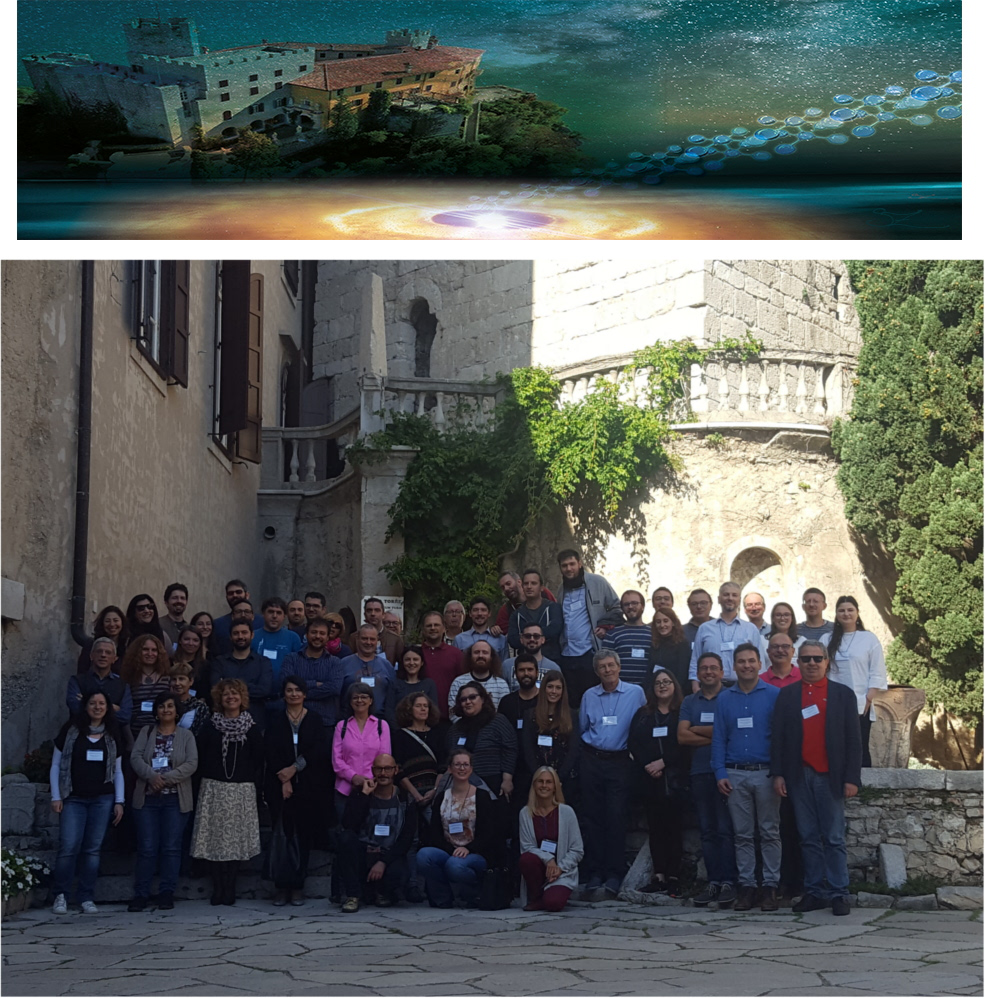Speaker
Description
Introduction: While being less abundant, and hence more difficult to detect with respect to neutrals, molecular ions play a key role in the interstellar medium (ISM) and planetary atmospheres, as intermediate steps in the build-up of complex organic molecules (COMs). For instance, the dissociative recombination of C2NH2+ is crucial to link methanimine and ammonia (Yuen et al. 2019) in both star forming regions and Titan’s atmosphere. Several charged species with a prebiotic potential, e.g. H2COH+ (Bacman et al. 2016), H2NCO+ (Marcelino et al. 2018), HNCCN+ (Rivilla et al. 2019) have been observed in pre-/protostellar regions. In the Solar System, the Cassini-Huygens mission detected a multitude of N-containing organic cations with unexpected abundances in Titan’s ionosphere and the idea has been put forward (Vuitton et al. 2019 and references therein; Hörst 2017) that ions trigger a rich gas-phase chemistry leading to the build-up of complex N-compounds, eventually forming tholins, a key ingredient of Titan’s haze.
Despite the ground-breaking discoveries made by space missions and astronomical observations, some questions are still open: what are the molecular structures of the ions? what are the chemical pathways responsible for the growth of complex ions? It is therefore necessary to investigate and quantify possible formation and destruction pathways of these species by measuring rate constants and branching ratios (BRs) of ionic reactions under laboratory conditions (pressure, temperature) close to those occurring in the ISM and planetary atmospheres.
Experiments & theory: Ion traps and guided beam devices have been employed to investigate ion-neutral processes. Recently, laboratory measurements of the reactions of different isomers of the cyanomethyl cation (c-C2H2N+ and CH2CN+) with several saturated and unsaturated hydrocarbons were performed using guided ion beam mass spectrometric techniques at Trento and Orsay. Photoionization of apt neutral precursors with tuneable VUV radiation from the DESIRS beamline @SOLEIL synchrotron radiation facility was used to ensure the production of specific isomers of the C2H2N+ ion (Fathi et al. 2016a, Fathi et al. 2016b, Fathi et al. 2016c).
Here we present new measurements on the generation of two different CH3N+ cation isomers, specifically the HCNH2+ (aminomethylenium ion) and the H2CNH+ (methyleniminium ion), using dissociative VUV photoionization of cyclopropylamine and azetidine neutrals, respectively. We have probed the reactivity of both isomers with small hydrocarbons (CH4, C2H2, C2H4, allene C3H4 ) and with CH3OH, both as a function of the photon and collision energy, in order to measure absolute reactive cross sections and product branching ratios. Ab initio calculations are performed in order to find reaction pathways leading to the observed products and to explain the dependence of their yield on the collision energy of the reactants.
Conclusions and outlook: Ion-neutral reactions like those investigated in the present study can lead to larger charged species, which upon subsequent neutralization processes, e.g. by dissociative recombination with electrons, can form heavy neutrals functioning as templates for reactions producing even larger species. Our results can help in improving the reliability of chemical models predicting the abundances and distributions of COMs in protoplanetary disks as well as in the atmospheres of planets and satellites.
References: Bacmann E. et al. 2016 A&A 588, L8; Fathi, P. et al. 2016a Molecular Astrophysics 5, 9; Fathi, P. et al. 2016b Molecular Astrophysics 2, 1; Fathi, P. et al. 2016c Int. J. Mass Spectrom. 411, 1; Hörst S. M. 2017 J. Geophys. Res. Planets 122, 432–482; Marcelino N. et al. 2018 A&A 612, L10; Rivilla V.M. et al. 2019 MNRAS Lett. 483, L114; Vuitton V. et al. (2019) Icarus 324, 120-197; Yuen C.H. et al. 2019 MNRAS 484, 659.

